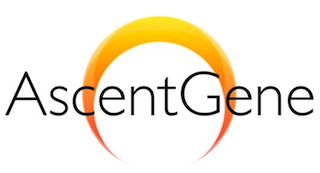Nuclear and Cytoplasmic Extract Catalog
Cell Line
Source and Properties
Extract
Catalog #
Unit Price
Unit Size
HEK293
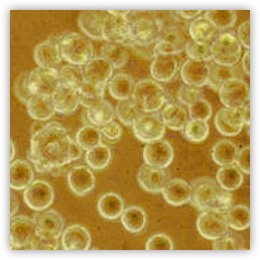
Human Embryonic Kidney (HEK) 293 cells were originally derived from human embryonic kidney grown in tissue culture. The cells allow for episomal replication of transfected plasmids and can be used for amplification of the plasmids and expression of the desired gene products. Since HEK cells express a number of adenoviral genes, they can be used to propagate adenoviral vectors in which these genes are deleted. HEK293 cells have been widely used in cell biology research for many years and have demonstrated to be a useful cell type to produce adenovirus, other viral vectors, and effectively glycosylated human recombinant proteins. They are also used by the biotechnology industry to produce therapeutic proteins and viruses for gene therapy.
HeLa
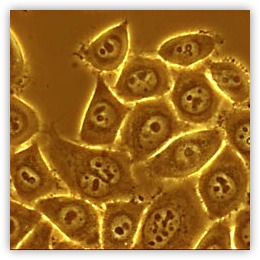
The HeLa cell line was derived for use in cancer research from a fatal cervical carcinoma. The HeLa genome was created by horizontal gene transfer from human papillomavirus 18 (HPV18) to human cervical cells. The genome is different from either parent genome, including the number of chromosomes. HeLa cells have a modal chromosome number of 82, with 4 copies of chromosome 12 and 3 copies of chromosomes 6, 8, and 17. These cells proliferate abnormally rapidly, even compared to other cancer cells. HeLa cells have an active version of the enzyme telomerase during cell division, which prevents the incremental shortening of telomeres that is implicated in aging and eventual cell death. The cells allow for episomal amplification of transfected plasmids and extended temporal expression of the desired gene products.
CHO-K1
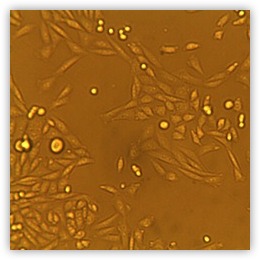
Chinese hamster ovary (CHO) cells are a cell line derived from the ovary of the Chinese hamster. They are often used in biological and medical research and commercially in the production of therapeutic proteins. CHO cells have been a cell line of choice because of their rapid growth and high protein production, especially when long-term, stable gene expression and high yields of proteins are required. CHO cells are used in studies of genetics, toxicity screening, nutrition, and gene expression, particularly to express recombinant proteins. The cell line is most commonly used as a mammalian host for industrial production of recombinant protein therapeutics.
MCF-7
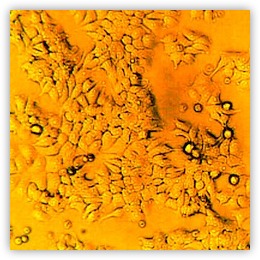
MCF-7 cells are a well-characterized estrogen receptor (ER) positive control cell line (cells are positive for cytoplasmic estrogen receptors) and therefore are a useful in vitro model of breast cancer to study the role of estrogen in breast cancer. Cells are also positive for cytokeratin and negative for desmin, endothelin, GFAP, neurofilament, and vimentin. MCF-7 is also used as a model system for the study of apoptosis in metastatic cancers.
SH-SY5Y
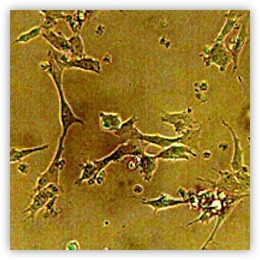
The cell line SH-SY5Y, which was originally established from a bone marrow biopsy, is a thrice-cloned neuroblastoma that is genetically female (has two X chromosomes, but no Y). This cell line is used in studies of apoptosis and neuroprotection as an in vitro model of human neuronal cells.
C6
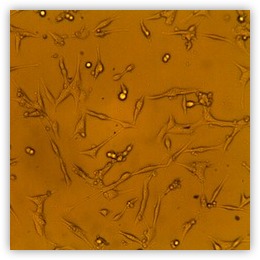
Rat glioma C6 cells are used as a model for brain cancer (astrocytomas) studies. The rat C6 glioma cell line, originally produced by Wistar-Furth rats exposed to N,N'-nitroso-methylurea, is morphologically similar to Glioblastoma multiforme (GBM), the most common malignant form of glioma. The cells express both functional cannabinoid and vanilloid receptors. Trypsin promotes C6 glioma cell proliferation in serum- and growth factor-free medium.
LNCap
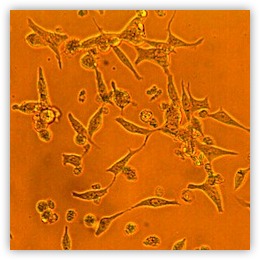
LNCap cells are a cell line of human cells commonly used in the field of oncology. LNCap cells are androgen-sensitive human prostate adenocarcinoma cells derived from the left supraclavicular lymph node metastasis. They are adherent epithelial cells growing in aggregates and as single cells. The malignant properties of LNCap cells are maintained in the cell culture. The cells present a hormonally responsive model of cancer. High-affinity specific androgen receptors are present in the cytosol and nuclear fractions of cells in culture and in tumors. Estrogen receptors are found in the cytosol. The cell line expresses Prostate Specific Antigen.
NIH/3T3
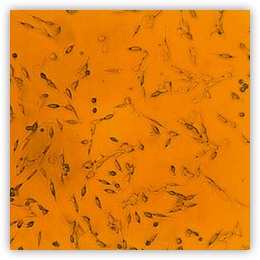
A very widely used mouse fibroblast cell line, 3T3 cells have been derived from different mouse strains. The NIH strain was established at the National Institutes of Health in the United States from a Swiss mouse embryo. The spontaneously immortalized cells with stable growth rate were established after 20-30 generations. These cells are highly contact inhibited and are sensitive to sarcoma virus focus formation and leukemia virus propagation. The established NIH/3T3 line was subjected to more than 5 serial cycles of subcloning in order to develop a subclone with morphologic characteristics best suited for transformation assays. It is used for DNA transfection studies.
COS-7
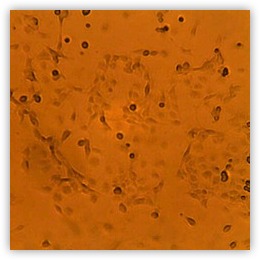
This is an African green monkey kidney fibroblast-like cell line suitable for transfection by vectors requiring expression of SV40 T antigen. COS is a cell line often used by biologists when studying the monkey virus SV40. It is also often used to produce recombinant proteins for molecular biology, biochemistry, and cell biology experiments. This line contains T antigen, retains complete permissiveness for lytic growth of SV40, supports the replication of ts A209 virus at 400C, and supports the replication of pure populations of SV40 mutants with deletions in the early region. The line was derived from the CV-1 cell line by transformation with an origin defective mutant of SV40, which codes for wild type T antigen.
U2OS
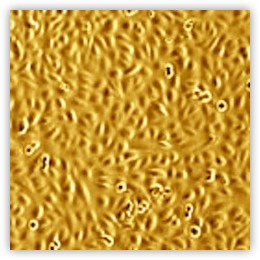
The human osteosarcoma U2OS cell line was one of the first generated cell lines and is used in various areas of biomedical research. U2OS, originally known as the 2T line, was cultivated from a moderately differentiated sarcoma of the bone tissue. Cell line U2OS is chromosomally highly altered, with chromosome counts in the hypertriploid range. Very few normal chromosomes are present, but a high number of stable marker chromosomes are identified. U2OS cells exhibit epithelial adherent morphology. Cells are positive for insulin-like growth factor I (IGF-I) and insulin-like growth factor II (IGF-II) receptors, and express a number of antigens. The proteins of the U2OS cell line were analyzed using proteomics technology, and 237 different gene products were identified. The U2OS 2-D Electrophoresis database that includes 3,000 individual spots analyzed provides the basis for future protein studies.
293T
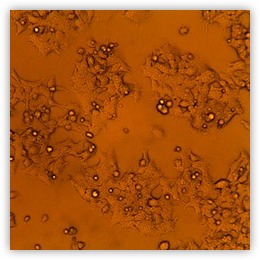
293T is a human embryonic kidney cell line commonly used for transfection assays. Due to the expression of the large T antigen in the cell, the episomal replication of plasmids with SV40 origin of replication allows for amplification of the transfected plasmids and extended temporal expression of the desired gene products.
